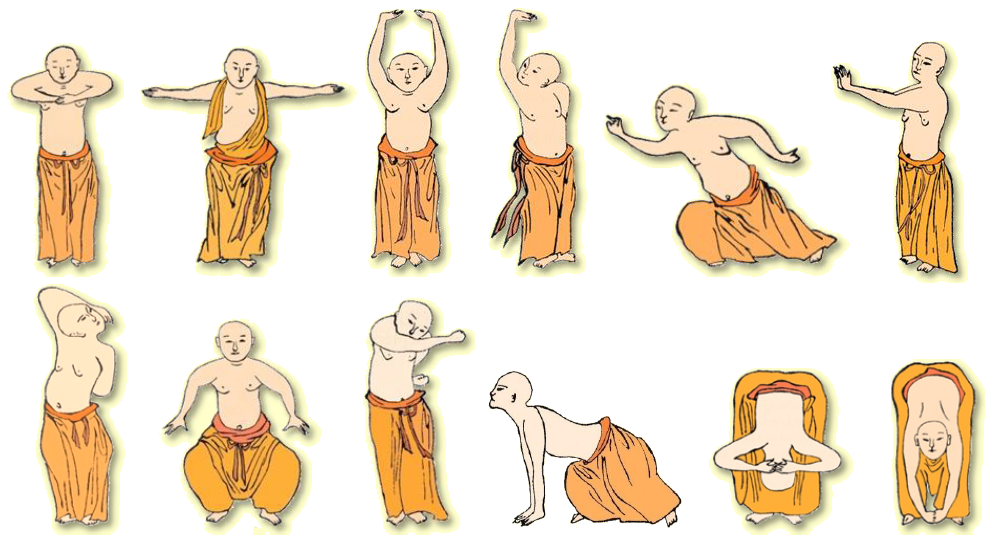According to legend, the Yijin Jing was said to be left behind by Bodhidharma after his departure from the Shaolin Monastery, and discovered within his grave (or hidden in the walls of the temple) years after he had left (or died). It was accompanied by another text, the Xisui Jing, which was passed to a student of Bodhidharma's, but has not survived to the modern day.
The monks of Shaolin supposedly practiced the exercises within the text but lost the true purpose of the document; Lin Boyuan recounts the legend that they "selfishly coveted it, practicing the skills therein, falling into heterodox ways, and losing the correct purpose of cultivating the Way. The Shaolin monks have made some fame for themselves through their fighting skill; this is all due to having obtained this manuscript."
Both documents were written, per the mythology, in an Indian language which was not well understood by the monks of the temple. According to one legend, a monk decided that the text must contain more valuable knowledge than simply self-defense, and went on a pilgrimage with a copy of the text to find someone who could translate the deeper meaning of the text. He eventually met an Indian priest named Pramati in the province of Szechwan who, examining the text, explained that the meaning of the text was extraordinarily deep and beyond his ability to translate fully. He nonetheless provided a partial translation. The monk found that within a year of practicing the techniques as Pramati had translated, that his constitution had become "as hard as steel," and he felt that he could be a Buddha. The monk was so pleased that he thereafter followed Pramati wherever he went.
- Log in to post comments

Comments
易筋經 · Yi Jin Jing (1-12 · Full Explanations)
Anand Sun, 28/Nov/2021 - 18:30
Full explanation of Yi Jin Jing 易筋經 / ИЦзиньЦзин - recorded during a Qi Gong Retreat in July 2018 at the Shaolin Temple Europe 歐洲少林寺 located in Otterberg / Kaiserslautern in Germany.
Shaolin Yi Jin Jing is a method to develop strong and flexible muscles and tendons. It is therefore also called "Muscle and Tendon Change Classic".
The 12 Exercise / Posture Names are:
1) Wei Tuo Presenting The Pestle (Frontways)
2) Wei Tuo Presenting The Pestle (Sideways)
3) Wei Tuo Presenting The Pestle (Upwards)
4) Plucking Stars On Each Side
5) Pulling 9 Cows By Their Tails
6) Displaying Claws and Spreading Wings
7) 9 Ghosts Drawing Swords
8) Placing 3 Plates On The Floor
9) Black Dragon Shows It's Claws
10) Tiger Jumping On It's Prey
11) Bowing Down In Salutation
12) Swinging The Tail
It belongs to the classic repertoire of Qi Gong exercises in the Shaolin Arts around the globe. Together with the 8 brocades (Ba Duan Jin) and the meditative circular movements (Chan Yuan Gong) it gives a strong foundation to complete all martial exercises.
Every year there are several retreats that are taking place in the Shaolin Temple Europe 歐洲少林寺, the monastery where I am living.
A retreat can either be a 3-day Retreat (Friday - Sunday) or a 6-day Retreat (Monday - Saturday). Every retreat is held under a specific topic, such as: Gong Fu, Qi Gong (e.g. Ba Duan Jin, Yi Jin Jing, 13 Luohan), Meditation retreats and Rou Quan retreats.
If you are interested in joining any of these retreats, please take a look at all dates that are published on the website of the monastery: